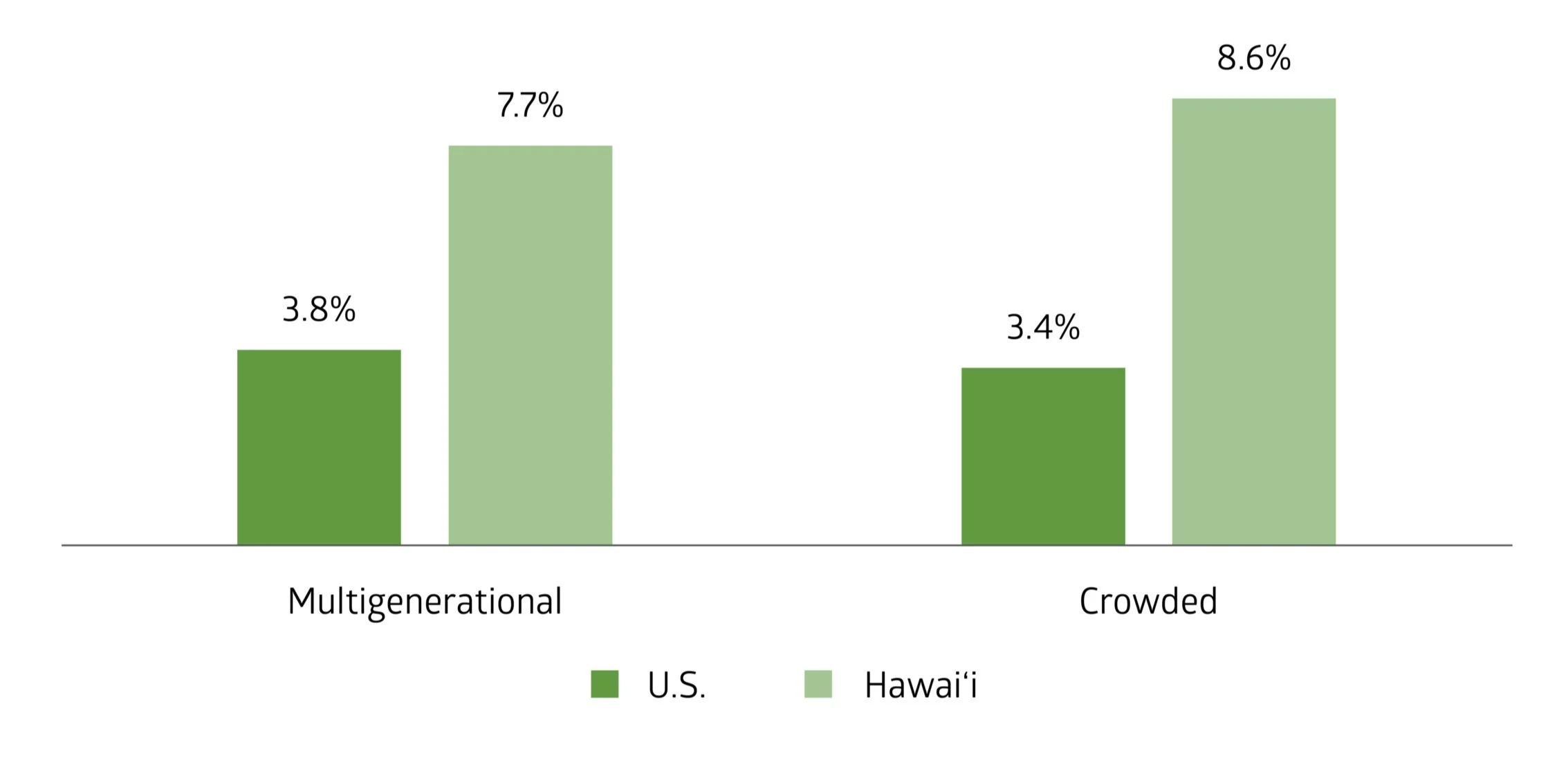Hawaiʻi’s crowded households could make safely reopening schools harder
This week, as Hawaiʻi tallied a record-high number of new COVID-19 cases, major labor unions requested a delay in the reopening of public school campuses. It’s important to consider that our students go home to households that are more than twice as likely to be multigenerational and crowded than the national average.
In fact, Hawaiʻi ranks first in the nation in having the highest proportions of both multigenerational and crowded households, according to the U.S. Census Bureau. We also rank second in the nation for largest average household size, just behind Utah.
Figure 1. Percent of Crowded or Multigenerational Households in Hawaiʻi Compared to the U.S.
Figure 1. The Census Bureau defines multigenerational households as family households consisting of three or more generations. In 2018, 7.7 percent, or about 1 in 13, Hawaiʻi households were multigenerational, which is bit over twice the national average of 3.8 percent.
Hawaiʻi stands out even more when it comes to crowded housing. The Census Bureau considers housing units with more than one person per room as crowded. In Hawaiʻi, 8.6 percent of households—more than 1 in 12—are crowded, while the U.S. average is only 3.4 percent, or 1 in 29.
In other words, census data show that students in Hawaiʻi are much more likely than those in other states to be living in households with grandparents and where it is difficult to socially distance themselves.
As our state officials, teachers, other school employees, and parents struggle with the decision to reopen Hawaiʻi’s public school campuses, the living situation of our students should be taken into account.

